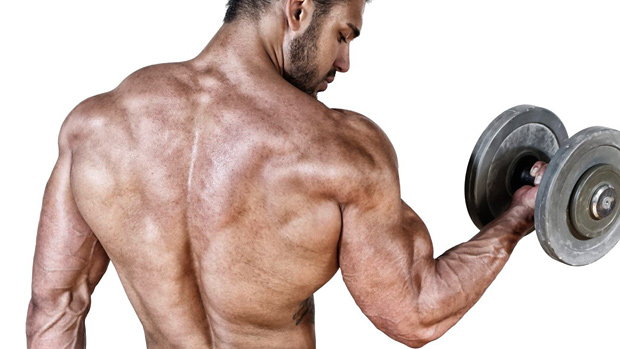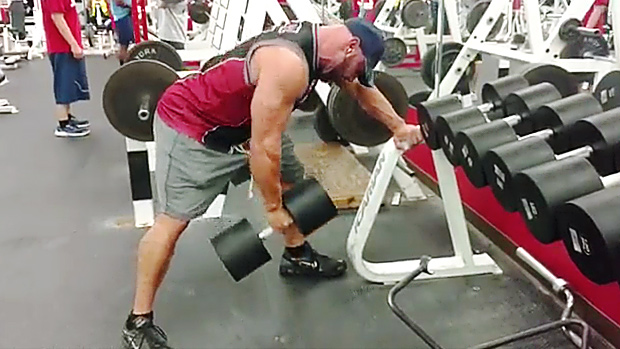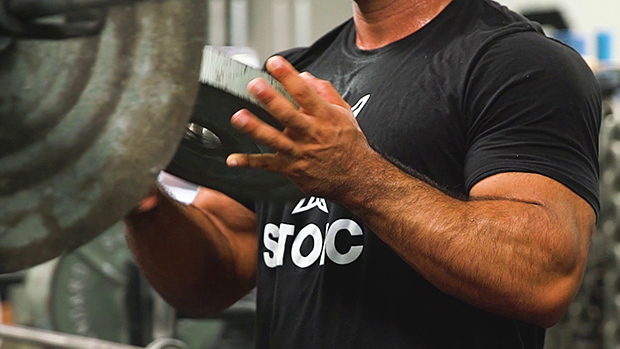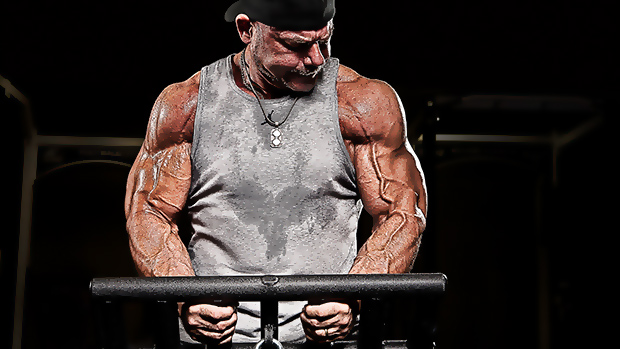They say not to train biceps and triceps directly and they mock those who do. They say training your arms has no "functional" carryover into real-world performances. Who are they exactly? Smug functional training zealots. And they're wrong.
It's time to tune those guys out. Don't be discouraged from doing direct arm work by guys who don't even look like they lift. Seek and enjoy the benefits of targeted arm work, which includes real-world carryover into life, performance, and protection against common injuries – you know, the ones that'll keep you from being "functional."
Here are the top three reasons to start devoting some training time to the arms. And no, none of them include looking like a tank in your sleeveless shirts, though that's always a plus.
When it comes to improving the big lifts, most lifters know that targeting the triceps will improve pressing lockout. But what many don't know is that both the biceps and triceps play a pivotal role in the stabilization and positioning of the gleno-humeral joint in the setup and initiation in the bench, deadlift, and squat.
Initiating a co-contraction of the prime stabilizers of the shoulders, including the pectoralis group, latissimus, upper back, and rotator cuff complex, is made easier by the inclusion of strong and resilient positioning in the long heads of the biceps and triceps.
Heck, the biceps and triceps play a role in nearly every strength movement. They're part of the total body kinematic chain that must work as a unit to keep making notable progress in terms of barbell performances. They also maintain and improve gross mechanics and movement of the human body no matter what the activity.
The more synergistic joint torque that can be produced through an extremity up into the proximal joints of the hips, and in this case the shoulder complexes, the stronger this unit will be able to function due to the reduction of neural locking of tissues and joints in the chain. It'll also create a more optimal position throughout the chain itself. By learning to utilize another group of muscles including their force and positional proprioceptive abilities into any movement, that movement will have the ability to be optimized, period.
Clearly, training the triceps with pressing movements and direct work can translate into better lockouts on the bench and overhead press, thus better numbers in general. But what exactly is the payoff for training biceps?

The biceps play a key role in the positioning and stability of the shoulder joint before the initiation of movement, but they're also key prime movers in the vertical and horizontal pull variations, especially finishing off the top end of the range of motion. With the popularization of CrossFit-style programming, which places a heavy emphasis on the pull-up, not training the biceps directly is absolutely a limiting factor in strength and muscular endurance.
From a movement deceleration standpoint, as soon as the pull-up starts incorporating rhythmic compensations from the hips, core, and lower extremities, the stress of the eccentric component of the movement goes through the roof, placing vulnerability on the shoulder complex as a unit if the biceps can't handle the force transference. One of the easiest ways to not only add strength, but also protective functionality to this is by using rhythm and tempo dependent biceps work.
Finally, both direct biceps and triceps training enhances the kinetic chain to function in heavy compound movement patterns by allowing an athlete to tap into the mind-muscle connection and explore the relationship between tension and strength. Given this type of neurological training stimuli, the increased synergistic inter-muscular and intra-muscular coordination has the ability to be improved, leading to the potential for stronger performances under the bar.
Why does shoulder and elbow joint stability matter? Because you need it when moving in everyday life, not just when lifting. And when it comes to direct arm training, the naysayers overlook the foundational principles of biomechanics and movement anatomy that pertain to the local structures of the upper extremity.
The biceps and triceps are comprised of multiple muscles on each side of the upper arm, but are highlighted proximally up near the true gleno-humeral shoulder joint with long heads that course the shoulder joint. Both the biceps and triceps long heads function as dual joint muscles, with the long head of the biceps playing a dynamic role in the flexion of the elbow while the long head of the triceps acts as an extensor of the elbow joint, but also aiding flexion (biceps) and extension (triceps) of the shoulder joint.
Though these long head tendons play minor rolls in dynamic movement at the shoulder joint (which is a commonly problematic joint in the lifting community), these structures are important for the stability of it. Additional force, position, and positional torque output from these long-headed structures, especially when acting in a co-contracted synergy, can lead to a fully centrated shoulder joint, along with the maintenance of this centralized position, while the shoulder is challenged with dynamic movement.
Down into the distal insertions of the biceps and triceps, both groups anatomically merge together as one tendinous unit before inserting across the elbow joint. The common biceps tendon leads to the bicipital aponeurosis: a strong and dense fascial sheath that covers the majority of the anterior surface area of the elbow joint, traveling deep down into the forearm in a broadened area of attachment.

In a similar fashion, the three distinct heads of the triceps all converge onto the common triceps tendon, which ultimately crosses the elbow joint, and inserts onto the olecranon process of the ulna, otherwise known as the point of the elbow.
So why are these origins and insertions in the triceps and biceps group so important to upper extremity static and dynamic stability? When targeted with strategic ranges of motion in direct biceps and triceps work that involve slight shoulder joint position manipulation on top of concentrating on the quality and control of the elbow movement, the long heads of the biceps can act as important stabilizers to one of the most injury-prone joints in the human body.
On top of positional improvement at the shoulder, using more concentrated set and rep schemes that cause a local pump effect via increased metabolic stresses, the distal biceps and triceps tendinous attachments can also strengthen and become more resilient, especially when challenged with near maximal loads in big compound movements.
The stability of joints during dynamic actions involves a combination of mechanical strength and neurological coordination. This holds true throughout every joint in the body, so why would we overlook these key adaptations when it pertains to the biceps and triceps?
Strategically programmed and well-executed direct arm training can produce a protective mechanism from injuries at the shoulder and elbows joints.
If powerlifting is your sport, or if strength is your training focus, it's safe to say that you'd be concerned about a torn biceps tendon. That's the type of injury that makes it damn hard to train through while seeing any notable progress from your work. Sure, you can train through lower back pain or around a muscle tweak, but as soon as an injury becomes mechanical in nature, progress comes to a screeching halt.
The biceps are notorious for gruesome injuries – aching, pain-in-the-ass type injuries from crunching the biceps tendon during bench press and straining discomfort on the tendon during a back squat. What do the presentations of these biceps injuries all have in common? It's not usually the muscle belly that's involved, it's the tendons that are injured and leave you debilitated.
A common misconception is that a tendon can't be strengthened because of limited vascularity and local blood flow to these structures. While the regenerative capabilities and trainability of tendons are just fractions of what they are for muscles, that doesn't mean we can't train the tendons to become more resilient to stress in big compound movements.
Tendons are highly adaptable to increased time under tension and repeated loading. The types of training that produce tendon resilience and reduce the likelihood of local injuries is accentuated eccentrics along with set and rep schemes that create metabolic stress – in other words, hypertrophy training. But it's not just the tendons, the biceps and triceps also respond well to these same training variables.
Unfortunately, many lifters with hypertrophy-focused goals hit the arms directly in a bass-ackwards way. Obviously, those training the arms heavy with sloppy form, supra-maximal loading, and the overuse of cheat reps are increasing the likelihood of injury and looking douchey. This is the kind of stuff that gives direct arm training a bad rapport.
But if you want to add poundage to your big lifts, enhance stability of the shoulder and elbow joints, and stay healthy and resilient in the process, it's time to start incorporating some direct arm training.




